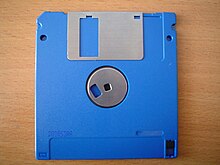Born-digital
However, as technologies have advanced and spread, the concept of being born-digital has also been discussed in relation to personal consumer-based sectors, with the rise of e-books and evolving digital music.
While it may have occurred to multiple people at various times, it was coined independently by web developer Randel (Rafi) Metz in 1993, who acquired the domain name "borndigital.com" then and sustained it as a personal website for 18 years until 2011.
Much of the grey literature that exists today are almost entirely conducted online, due in part to the accessibility and speed of internet communications.
[9] As the products of the vast amount of information created by organizations and individuals on computers, data sets and electronic records must exist in the context of other activities.
Types include visual media, digital animation, computer-aided design, 3D models and interactive art.
Webcomics follow the tradition of user-generated content and may later be printed by the creator, but as they were originally disseminated through the internet, they are considered to be born-digital media.
[16] Some publishing houses, including major ones such as Harlequin, have formed imprints for digital-only books in response to this trend.
[5] In recent years, however, the sale of e-books from traditional publishers has decreased, due in part to increasing prices.
One example of this trend is the 2008 recording of Hector Berlioz's Symphonie fantastique by Los Angeles Philharmonic under Gustavo Dudamel.
[23] This does not necessarily signal the demise of CDs, as they are still more popular than digital albums, but it does show that this changing born-digital content is having a significant influence on sales and the industry.
[24] "News Apps" are often heavily data-driven, using interactive graphics custom-built for the story by a team of software specialists in addition to the core group of writers and editors.
[27] Incompatibility is also a concern, in regard to the eventual obsolescence of both hardware and software capable of making sense of the documents.
[29] Additionally, since publishing is not as delineated in the digital realm and preliminary versions of work are increasingly made available, knowing when to archive presents further complications.
[30] For digital libraries and repositories that are used as reference materials, such as PBS LearningMedia, which provides educational resources for teachers, staying relevance is of utmost importance.
[33] Consumers have also had to deal with intellectual property as it concerns their ownership of and ability to control the born-digital material that they buy.
[35] Again, the first-sale doctrine, which, from a consumer standpoint, allows purchasers of materials to sell or give away items (such as books and CDs), is not yet applied effectively to digital objects.
Major journals such as the American Chemical Society have made significant changes to their print editions in order to cut costs, and many others predict an exclusively digital future.





